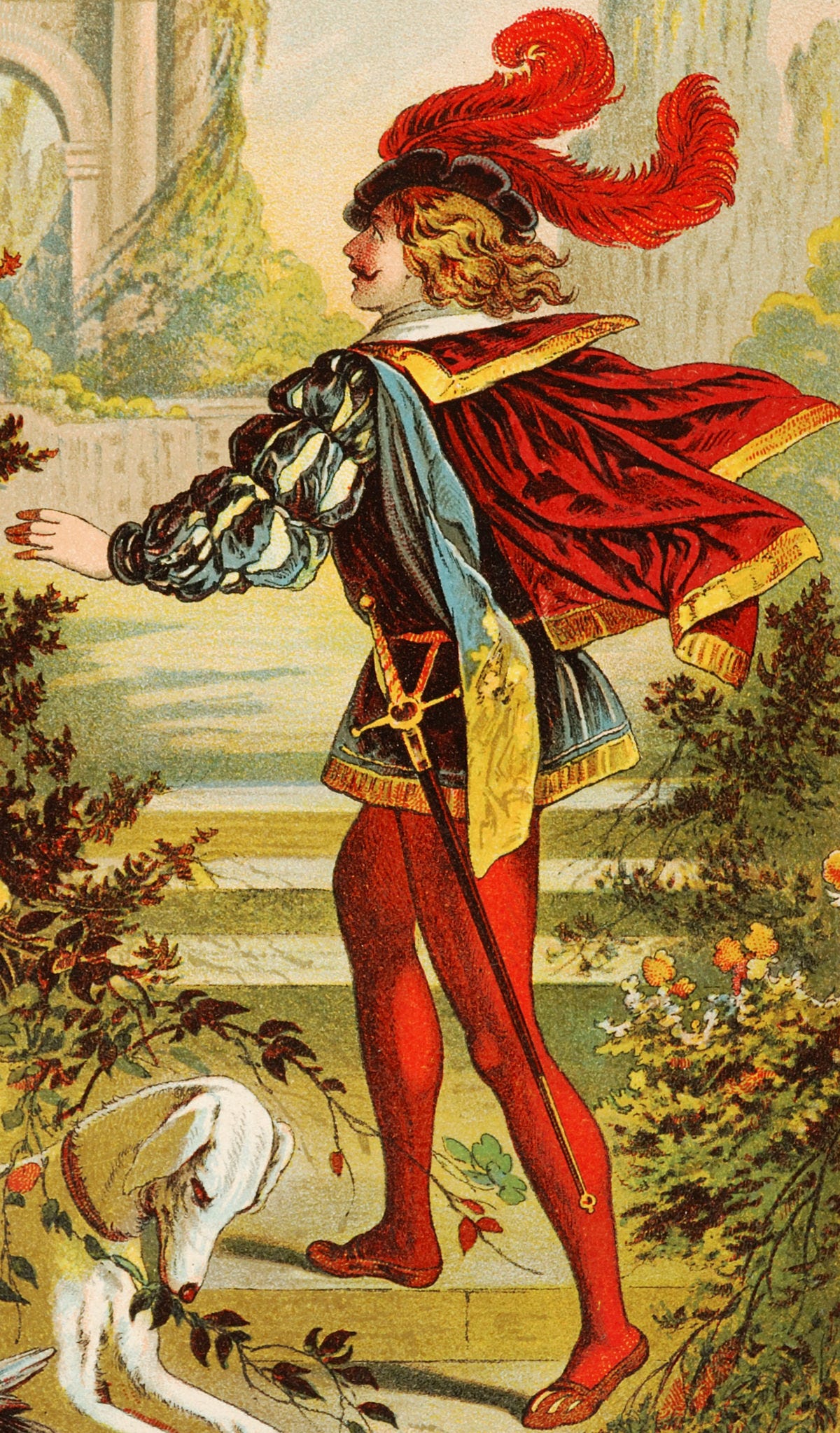(Deep breath) OK, new working paper is out.
If I seem excited, this has been in the pipeline since 2007…. more about that below.
This is with Abdel Abdellaoui, Oana Borcan and Pierre-André Chiappori. I’m very lucky to have such talented coauthors, who bring together such a wide range of expertise.
So, let’s talk about it!
The idea
Our paper starts with the following very simple idea about marriage markets: both genes, and social status, can make you a more attractive date.
Genes can make you taller, better-looking, smarter and more charming. Obviously, those characteristics are in demand in a romantic partner, and yes, the social science confirms this.
Social status includes things like being richer, or better educated, or having a higher-status job; or in other societies, being of noble birth or high-caste. You may have heard tell that these things, too, are attractive in a partner, and again, the social science checks out.
If you think this is bleeding obvious, I am so pleased, and you are dead right. What’s remarkable is that almost no work has observed these facts and drawn the equally obvious conclusion, which is that people with high status will often marry people with “good genes”. And, since genes are inherited biologically, and social status is inherited socially (e.g. as wealth), their children will often inherit both things together. So:
Over generations, high status and good genes will become associated.
From this simple idea some important consequences follow.
First, as regular readers know, there are genetic differences between rich and poor people. The standard explanation is that we live in a (somewhat) meritocratic society, where talent is rewarded. If your genes and/or your environment have made you smart, you may earn more and get rich. So, genes for geting rich make you rich. This is surely true, and there’s evidence for it. For example, after the fall of communism in Estonia, when society became more meritocratic, genes mattered more in determining your education and your career.
Our idea, which we call Social-Genetic Assortative Mating or SGAM, also explains these rich-poor genetic gaps. But it works a bit differently. First, meritocratic mobility only happens in meritocratic societies, and these are historically a small minority. Most humans on earth, no matter their talents, have been peasants like their fathers before them. SGAM, on the other hand, happens in every society where people care about their partner’s social status — so basically, every society. SGAM predicts that genetic differences between high and low status people should exist in all societies, not just modern meritocracies. (We really want to test this! Maybe ancient DNA data is going to make it possible soon.) SGAM also predicts that different genetic variants matter — not just variants that make you successful in the labour market, but also those that are attractive in marriage markets. So, SGAM might help explain why rich-poor genetic differences go beyond intelligence. (I hope we’ll be able to explore this soon, also.)
Also, under meritocracy, your genes make you rich, but not the other way round. This is how people usually think about genetics. They call genetics “nature” and the environment “nurture” or “society”. Lovers and haters of genetics seem to agree on this, and they like or dislike genetics because they think it provides “natural” explanations of social outcomes and social inequalities.
Sure, in an obvious sense, genes are natural. You’re born with your genes, they don’t change over time, and whatever New York Times reviewers may want to believe, they predict a lot about you. Genes affect you by changing protein production, body structure and/or other things usually studied by biologists.
But under SGAM, causality also goes the other way, from wealth to genetics. Being rich won’t change your genes — but it will affect who you marry, and so it will change your children’s genes. This will happen even if you get lucky and win the lottery. As we put it in the paper:
environmental shocks to socio-economic status are reflected in the DNA of subsequent generations.
In that sense, genes aren’t natural at all! A complex social process brought your parents together, and gave you your genetic endowment. It is no more natural than your bank balance.
Second, the same idea holds at the level of whole societies. Think about a society with high intergenerational mobility, so that not much socio-economic status is inherited from parents to children. Or, imagine a society where people just don’t care much about status when they choose romantic partners. In either of these societies, there will not be a strong association between genetics and social status. In the first society, intergenerational mobility will weaken the genes-status gradient. In the second society, it won’t be large to start with, because people with social status won’t marry people with “good genes” so often. In other words, over the long run, social institutions affect not just economic inequality, but genetic inequality too.
We model this out — Pierre-André very helpfully came on board and provided some much-needed firepower here. Below is a graph of the long-run genes-status gradient, plotted against two parameters representing a society’s economic institutions and its marriage markets. It can vary from near-zero correlation between genes and social status, to high correlations above 0.6.

Third, SGAM has consequences for social inequality. There’s been a lot of research showing that inequality is surprisingly persistent over time. The most famous is probably Greg Clark’s book The Son Also Rises. He looks at British surnames over nine centuries, and finds that high-status surnames in the 12th century were still relatively high-status in the 19th century. Greg Clark thinks that these very persistent status differences are down to genetics.
SGAM can provide a mechanism for this. Rich families indeed have hidden genetic differences. But notice that we are thinking about genetics a bit differently. Genes are not independent of wealth. Over the long run, families with high status “invest” in genetics, just as they might in other forms of wealth, by trading status for genes in marriage markets. As we put it, for intergenerational transmission of wealth, genetics are not a confound but a mediator.
Proving it
Theory is fine, but is this really happening? Do high-status people really marry people with different genes? The next pictures give the general idea, using data from several thousand UK couples. They plot one partner’s status — their education, or income in their first job — against the other partner’s genes — their Polygenic Score for Educational Attainment (PSEA). This is a DNA measure which predicts a person’s level of education. PSEA is a good genetic measure to test for SGAM, because we know that people care about intelligence and education in a partner.
As you can see, when one partner had more income or education, their spouse typically had a higher PSEA.
Those plots show our central idea, but they don’t prove we are right. After all, someone with high PSEA will themselves be better-educated and higher-income on average. So perhaps all that’s happening is that people with good genes marry other people with good genes? That would be plain Genetic Assortative Mating, which is old news.
We need to show that even a “shock” to someone’s social status — one which had nothing to do with their own genetics — would affect the genetics of their spouse. And we needed a big shock which affects a lot of people: genetic measures are quite noisy, and marriage markets are noisy too, so without a lot of data, any effects would get lost.
We use birth order. It’s well known that elder siblings have advantages over their younger brothers and sisters, perhaps because they get more attention from their parents. In particular, they end up better educated and with higher incomes. But on average, all siblings have the same genes. That is, there are differences, but they are completely random with respect to birth order: whatever they tell you, older brothers are not genetically superior beings.
So, we checked whether eldest siblings had spouses with higher PSEA than people who were younger in the pecking order. And they did! Controlling for other things like parental age and the size of the whole family, each extra elder sibling loses a person about 0.03 standard deviations of spouse PSEA. Not big, but enough to prove our point, and the directly measured effect of education is much bigger, as the plots above show.
Then we checked whether this effect was mediated by education and income. It seems so, because when we add in education or income as controls, the effect on spouse PSEA drops to zero. So the causal chain seems to be birth order ⇒ education & income ⇒ spouse’s genes. (We controlled for some alternative mediators too.) In fact, education explains about half of the effect of birth order. Indeed, “environmental shocks to socio-economic status are reflected in the DNA of subsequent generations.”

Why I love this paper
As an ideal for social science, I love George Orwell’s quote: “to see what is in front of one’s nose needs a constant struggle.” This paper is like that. The idea is absolutely obvious! Everyone knows that good looks help on the dating market, and that being rich or important helps too. (Obviously not in our case, dear reader — you and I are pure and high-minded and see deep into our partners’ souls — but for other people, I think it helps.) These ideas drive plots in fiction throughout history; Marx wrote “the effect of ugliness, its repelling power, is destroyed by money”; and the notable social scientist Donald Trump once said “part of the beauty of me is that I am very rich.”
Yet the consequences of this obvious idea are big. We should see genes-status gradients in all societies, everywhere. (We have an appendix of historical quotations from people, including Plato and John Adams, who believed there were “natural”, e.g. physical, differences between rich and poor.) Inequality is persistent because wealth, in effect, buys genetics. Genes aren’t really “natural”, and changes to social institutions change the distribution of genes in society, creating long-run effects on inequality over generations.
And nobody said it before us! (I hope. We found one article from the 1950s. If you know of anything else, tell me.)
The paper is out here and is called “Trading social status for genetics in marriage markets: evidence from UK Biobank”.
A bit of history
How this paper got written: it was winter of 2006-7, and I was in Chicago for a year at Northwestern during my PhD, learning game theory and microeconomics. I didn’t know anyone in town, and I was very lonely. I was staying with a nice old couple and walking their dogs through the snow. On one of these walks, I started thinking about a quote from a play we’d studied at school, Peter Barnes’ satire The Ruling Class.
In it, the 13th Earl of Gurney says
There’s always room at the top for brains, money or a good pair of titties.
If you find this crass, be aware that the 14th Earl of Gurney… doesn’t turn out too well.
Anyway, the quote gave me the idea.
I wrote down an attempt at a theoretical model and showed it to one of the professors. He tore it up in front of me. (Obnoxious behaviour in economics is a real thing!) Nonetheless, I kept thinking about it. Eventually I got myself on to the Boulder summer school for behavioural genetics, and met Abdel. Meanwhile the UK Biobank data came out. We began to wonder how to test the theory empirically. I was still struggling to find a good empirical shock which would cover enough people. At some point in 2020 I read a paper on birth order, and💡.
So, it’s been a long journey! I’m very pleased to finally share the result.
If you liked this, then I would love you to do three things:
Subscribe to this newsletter. It’s free. If you’re not sure, read more.
Share this post on social media. By telling your friends and/or followers, you’ll be doing me a huge favour.
Read about the book I’m writing. It’s called Wyclif’s Dust, too. You can download a sample chapter.








Well done! Does assortative marriage bring together certain birth order positions in certain combinations?
How about a cumulative eg. grandpaternal etc score for paternal age effects? How about dad’s dad age minus the difference with mum’s dad’s age. I’m serious. I don’t like this first born social advantage thing it just damn grinds my gears lol.
First borns sabotage younger borns with their school germs ‘n shit more like it.
Is there any advantage in this social game to having younger siblings? Or only from having fewer elder ones.
Thanks anyway.